Push The Boundaries of Time-Keeping With These 11 Clocks
 The Mengenlehreuhr clock in Berlin. (Photo: Muritatis/Flickr)
The Mengenlehreuhr clock in Berlin. (Photo: Muritatis/Flickr)
Since the advent of standard time, we’ve relied on clocks to keep us on track. But clocks are not merely a simple collection of hands and numbers. From sundials to set theory, and iPhones to hourglasses, the art and science of timekeeping is a wide world indeed.
Below we’ve selected 11 of the most fascinating clocks, all of which push the boundaries of time-telling as we know it.
1. Barnwell Sundial
Barnwell, South Carolina
 (Photo: Barnwell Chamber of Commerce/Public Domain)
(Photo: Barnwell Chamber of Commerce/Public Domain)
Just outside the courthouse in the town of Barnwell, South Carolina, lies a most interesting clock. Gifted to the town in 1858 by Captain Joseph D. Allen, the Barnwell sundial uses an unusual square shape to chart the months and days.
The clock has been keeping (almost) perfect time for close to 150 years, despite being installed 26 years before the advent and widespread adoption of standardized time.
2. Mengenlehreuhr
Berlin, Germany
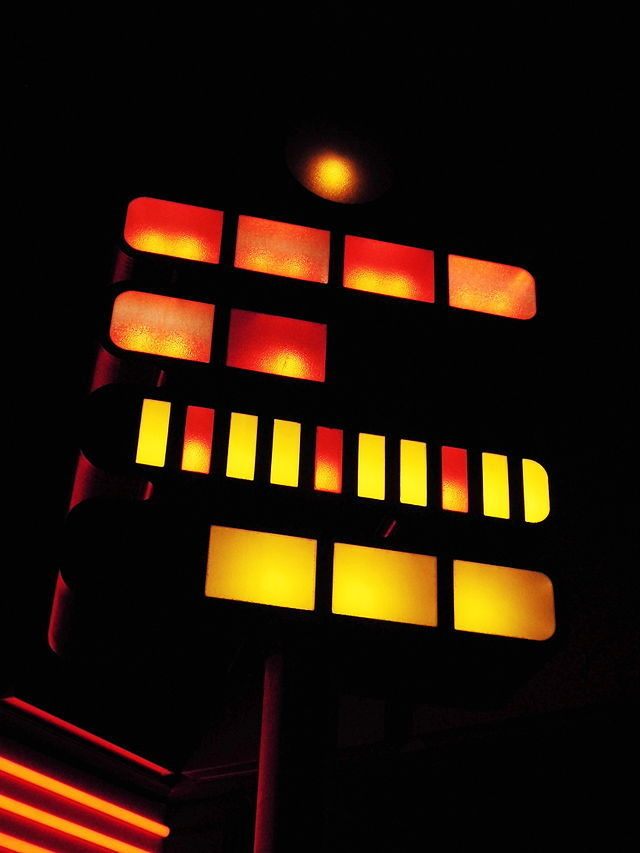 (Photo: Morn/WikiCommons)
(Photo: Morn/WikiCommons)
In the modern digital era, you can be forgiven if it takes you a second to tell the time on an analog clock. However, reading this clock on the Budapester Strasse in Berlin is more akin to solving a math equation.
German for “set-theory clock,” Mengenlehreuhr is divided into a series of 24 illuminated lights. The yellow blinking light at the top denotes the seconds, the top row the hours, and the bottom row the minutes. In the image below, for instance, the time displayed is 10:31.
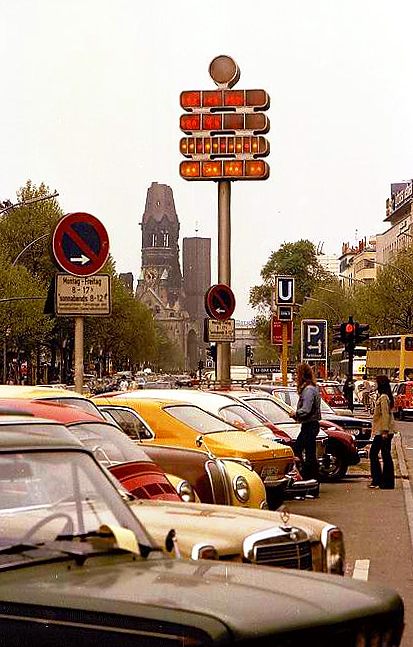 The clock in its original location in 1979. (Photo: Willy Pragher/WikiCommons CC BY 3.0)
The clock in its original location in 1979. (Photo: Willy Pragher/WikiCommons CC BY 3.0)
3. Jantar Mantar
Jaipur, India
 (Photo: Vberger/WikiCommons)
(Photo: Vberger/WikiCommons)
The Jantar Mantar astronomical observation site is ancient astronomy at its finest. The massive clay and brick structures, known as equinoctial sundials, are intended to measure the time of day down to a half-second of precision, along with the declination of the sun and other heavenly bodies.
The Rajput Maharaja Jai Singh II constructed four Jantar Mantars across northern India during the 18th century, although the most magnificent one is in his hometown, Jaipur. The primary purpose of these installations was for astronomers to compile exceedingly complex astronomical tables, which helped them predict the movements of the moon, planets, and sun.
4. Timewheel
Budapest, Hungary
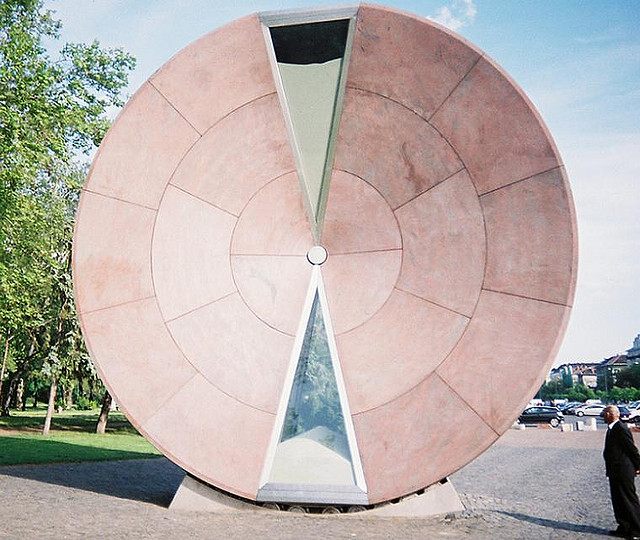 (Photo: Jason Tinkey/Flickr)
(Photo: Jason Tinkey/Flickr)
On the site of a former statue of Lenin lies the largest hourglass in the world, and possibly the largest hourglass ever built. Weighing over 60 tons, the sand in the hourglass takes a full year to completely filter through.
At the dawn of each new year, the Timewheel is rotated 180 degrees manually by four burly Hungarians (with the assistance of a pulley system) to start counting all over again.
5. Duquesne Brewery Clock
Pittsburgh, Pennsylvania
 (Photo: Joseph/Flickr)
(Photo: Joseph/Flickr)
The largest clock face in the United States sits on the side of the Duquesne Brewery building, lording its timekeeping abilities over all the residents of south Pittsburgh, Pennsylvania. Far larger than its more famous cousin, the Big Ben clock, the Duquesne Brewery Clock has a 60-foot face, and a minute hand that weighs a literal ton.
The brewery sadly shuttered its doors in 1972. However, in true American fashion, AT&T bought the rights to the clock in 2009—reminding everyone within eyesight to pay their phone bills.
 (Photo: Thomas Harper)
(Photo: Thomas Harper)
6. Timeball Tower
Williamstown, Australia
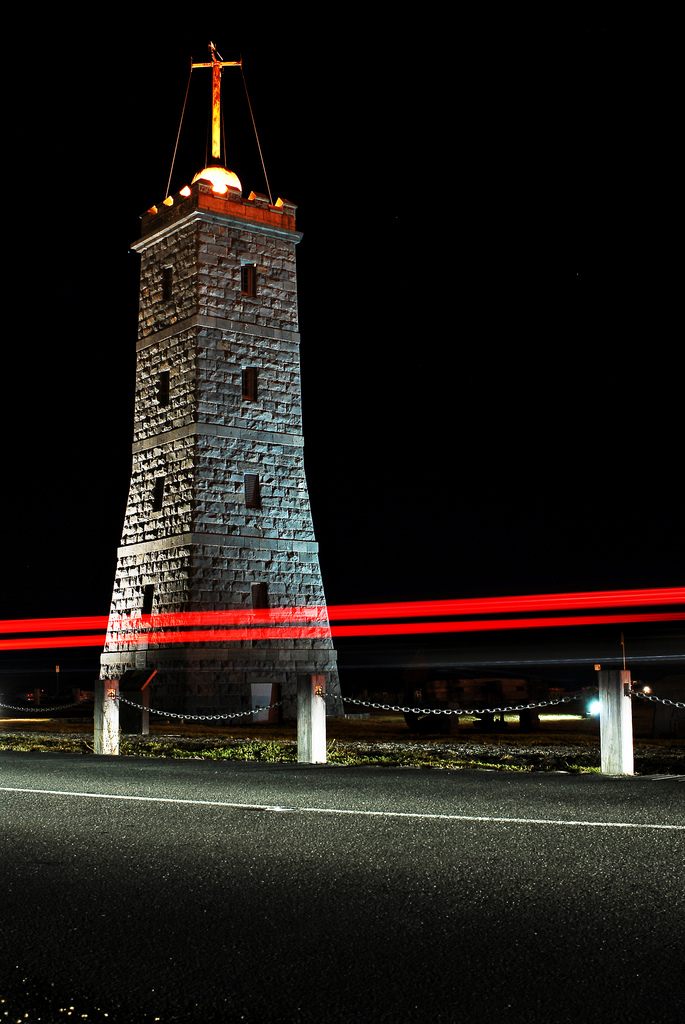 (Photo: whoalse/Flickr)
(Photo: whoalse/Flickr)
Just like the famous Times Square tradition, the Timeball Tower in Williamstown, Australia tells the time by hoisting and dropping a giant metal ball on the hour, every hour.
Perched on top of the Williamstown Lighthouse, the clock was originally used so that passing ships could synchronize their clocks. Now obsolete, the Timeball Tower continues to drop at 1 p.m. every single day, harkening back to a time before smartphones.
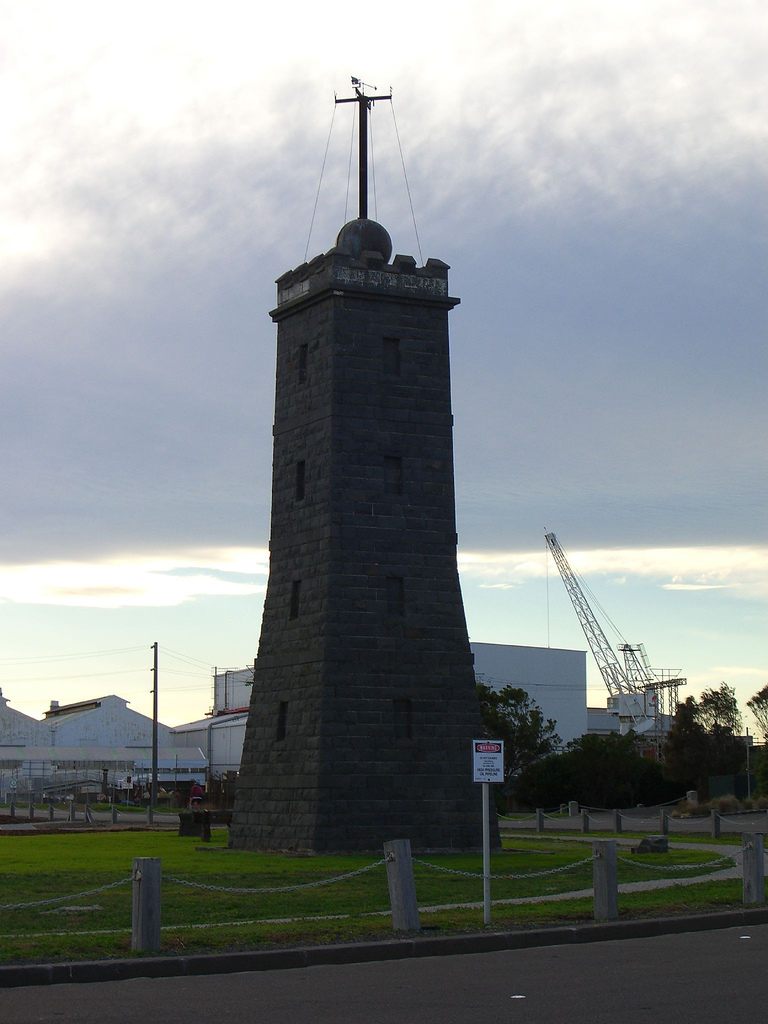 (Photo: avlxyz/Flickr)
(Photo: avlxyz/Flickr)
7. Elephant Clock
Dubai, United Arab Emirates
 (Photo: Jonathan Bowen/Wiki Commons CC BY-SA 3.0)
(Photo: Jonathan Bowen/Wiki Commons CC BY-SA 3.0)
We owe much of our modern world to the advancements that came out of the medieval Golden Age of Islamic civilizations. We can trace both social and intellectual achievements such as algebra, the concept of zero, and religious tolerance to the geniuses of the era. A little less enduring, but equally amazing, is the Elephant Clock.
First designed by the polymath al-Jazari in the 12th century—and diagrammed in his surviving manuscripts—the Elephant Clock is a weight-powered water clock, that for some reason, takes the form of an Asian Elephant. Water is channeled through a small hole in the elephant that drives a series of complex mechanical interactions, including serpents and seesaws, that end with the elephant driver loudly clashing his symbols, marking the passing of each half-hour.
Two working reproductions of the Elephant Clock still exist: in the upscale Ibn Battula Mall in Dubai (pictured above), and at a clock museum in Le Locle, Switzerland.
8. Rathaus-Glockenspiel
Munich, Germany
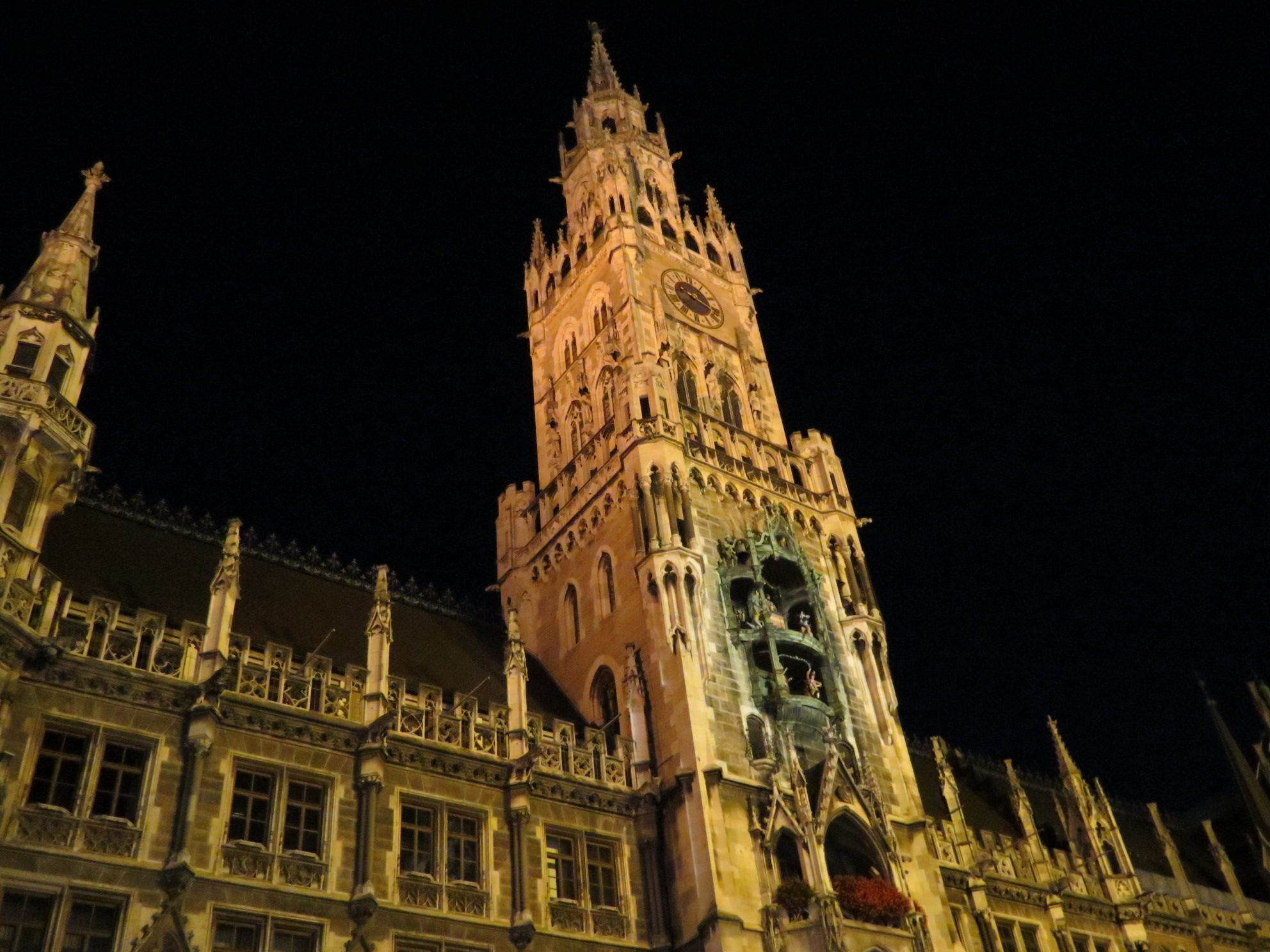 (Photo: Douglas Wacker/Wiki Commons/Public Domain)
(Photo: Douglas Wacker/Wiki Commons/Public Domain)
Built in 1908 to commemorate the 16th-century wedding of the Bavarian war hero Duke Wilhelm V, the Rathaus-Glockenspiel stands 260 feet over downtown Munich, carved into the side of the New Town Hall. At 11 a.m. every day, the mechanical clock puts on a show.
For 15 minutes, 43 bells, and 32 life-size figures spring to action. Mechanical jousters in blue defeat mechanical jousters in red, and a bunch of coopers, or barrel-makers, dance around, somehow signifying the end of a horrible 1517 plague. The clock luckily escaped serious damage during WWII, though subsequent renovations have left it slightly out of tune.
 (Photo: Douglas Wacker/Wiki Commons/Public Domain)
(Photo: Douglas Wacker/Wiki Commons/Public Domain)
9. Mechanical Dragon Clock
Blois, France
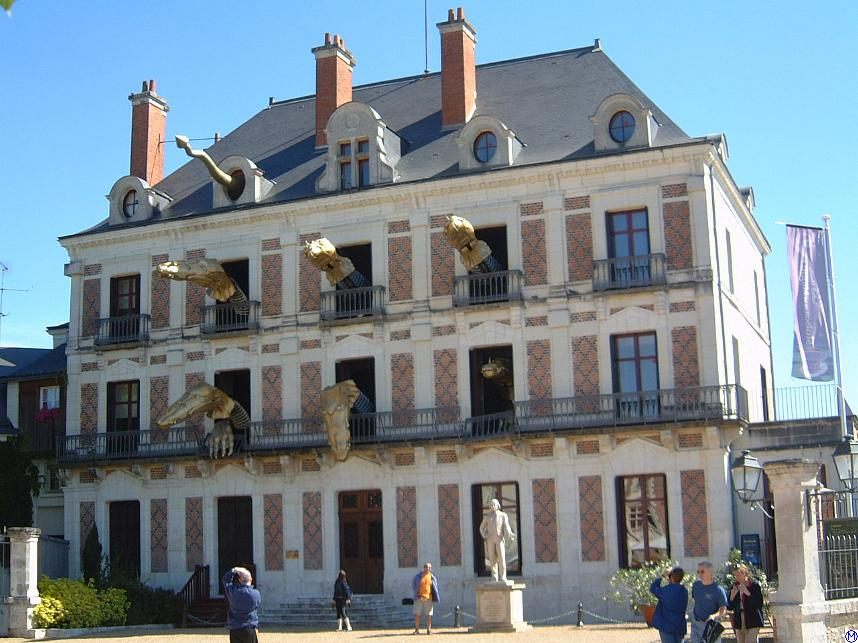 (Photo: Wolfgang Meinhart/WikiMedia)
(Photo: Wolfgang Meinhart/WikiMedia)
Every hour, on the hour, this unassuming villa in the small town of Blois, France, springs to life. Created by the French installation artist couple Michell and Jean-Pierre Hartmann in 1998 as an homage to Blois’ most famous son—and a clock-maker himself, Jean Robert-Houdin—the clock contains six mechanical dragons and a ton of moving parts.
When the hour strikes, the dragons, which are each over 21 feet long, bust through the windows, gnashing their jaws and scraping their paws against the facade of the building, to a backdrop of eerie music. The show lasts for about five minutes, after which the dragons slowly retreat back to their respective lairs.
 (Photo: drumaboy/Flickr)
(Photo: drumaboy/Flickr)
10. The Astronomical Clock of Besancon, France
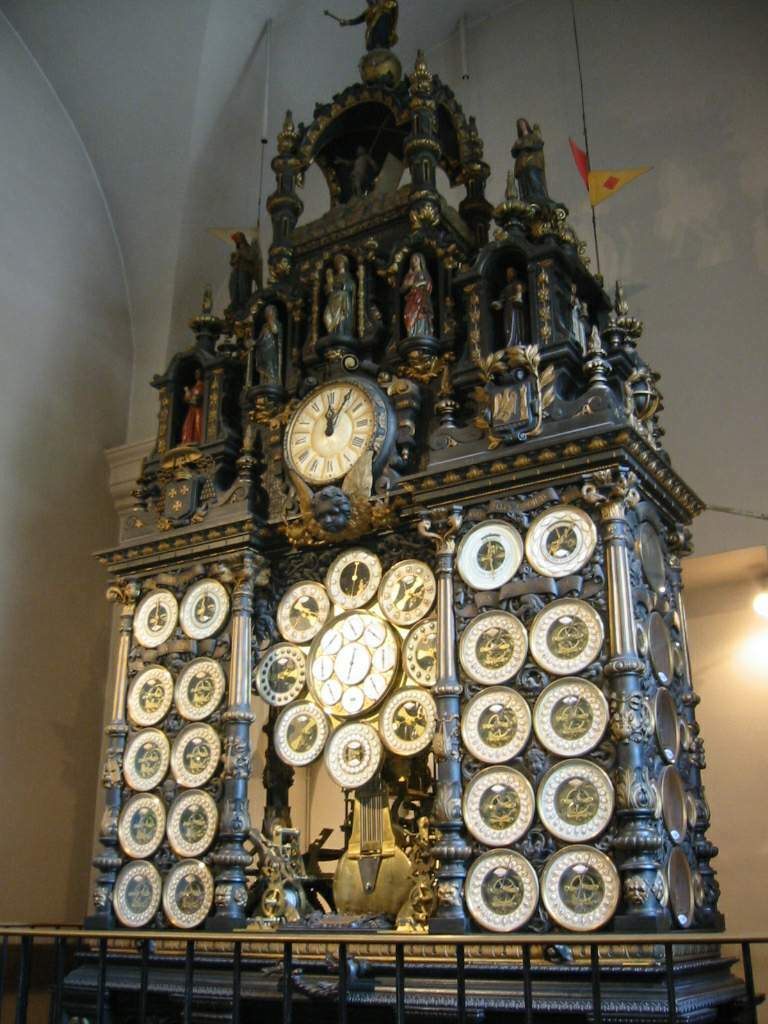 (Photo: Arnaud25/WikiCommons CC BY-SA 3.0)
(Photo: Arnaud25/WikiCommons CC BY-SA 3.0)
The most complicated astronomical clock in the world sits inside the Besancon Cathedral, in a town known as the watchmaking capital of France.
Installed in the cathedral in 1860, this ridiculously complex device has 30,000 pieces, 70 dials, 122 indicators, and tells the time for 17 cities around the world. Moreover, it has a perpetual calendar, and can even tell the tides in eight ports along the French coast.
 (Photo: Arnaud25/WikiCommons CC BY-SA 3.0)
(Photo: Arnaud25/WikiCommons CC BY-SA 3.0)
11. Clock of the Long Now: Prototype 1
London, England
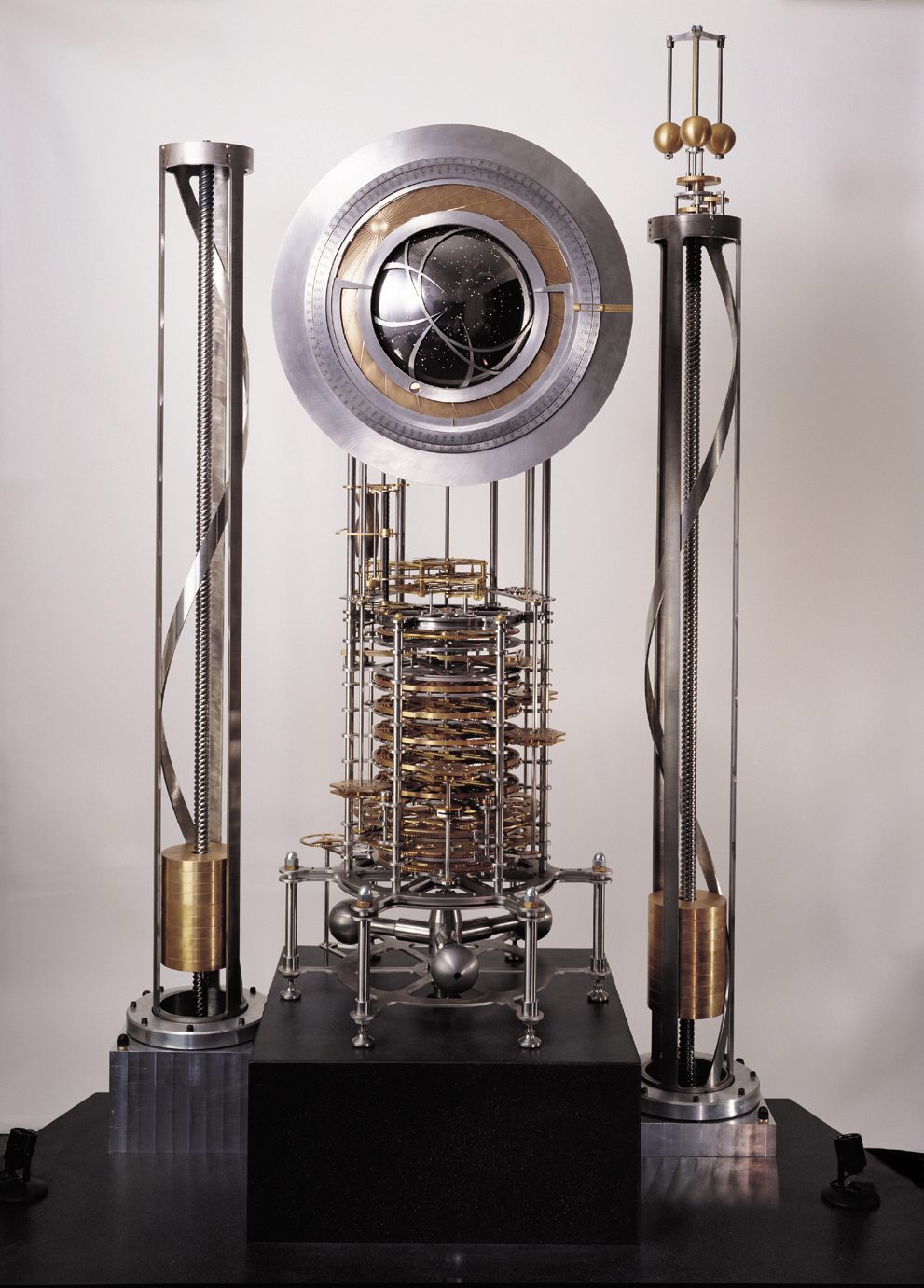 (Photo: Courtesy of longnow.org)
(Photo: Courtesy of longnow.org)
The futuristic brainchild of the Long Now Foundation, a San Francisco based non-profit that aims to seed long-term thinking and “creatively foster responsibility for the next millennium, the Clock of the Long Now is a mechanical clock that is supposedly designed to keep accurate time for the next 10,000 years.
The clock ticks once a year, with a cuckoo demarcating the passing of each millennium. The clock (still a prototype at this point) is supposed to be carefully constructed so that it would need no external power source, and could be understood and maintained by primitive societies in the wake of total economic collapse. The prototype began to tick on December 31st, 1999, and is on loan to the Science Museum of London.
While the protoype ticks away in London, the actual Clock of the Long Now is under construction in the remote mountains of Ely, Nevada. The power is expected to come from two helical weight drives on either side of the timepiece, and the clock will be able to recalibrate itself to solar noon on sunny days.
 (Photo: Courtesy of longnow.org)
(Photo: Courtesy of longnow.org)

(Photo: Courtesy of longnow.org)


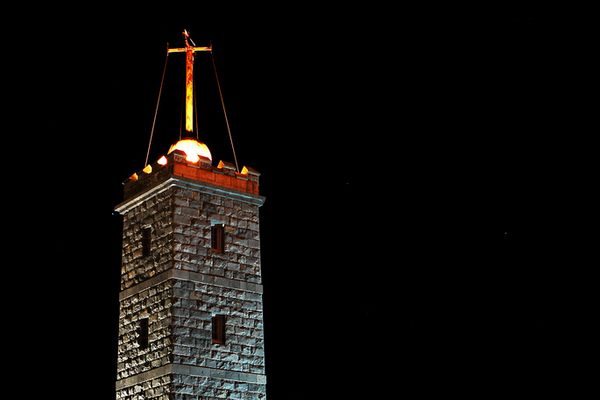


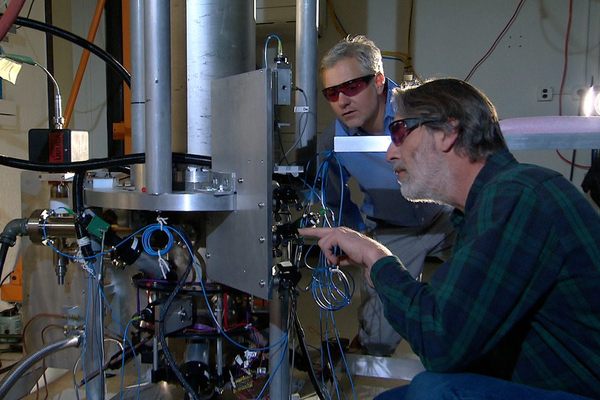



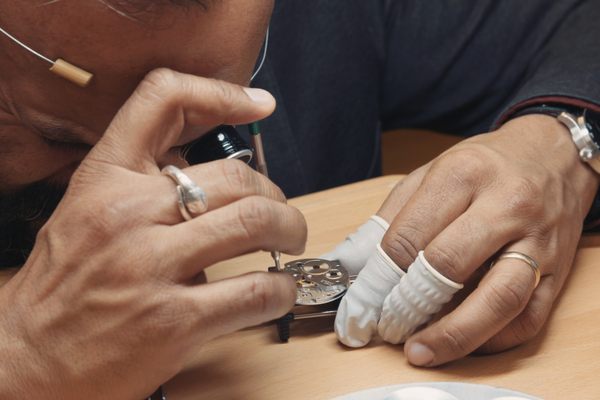


Follow us on Twitter to get the latest on the world's hidden wonders.
Like us on Facebook to get the latest on the world's hidden wonders.
Follow us on Twitter Like us on Facebook